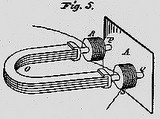
Fujimura’s earlier patent that covers a sintered permanent magnet had expired, but the applicant hoped to obtain a patent on a permanent magnet alloy, a precursor to the sintered permanent magnet. During prosecution, the examiner rejected the claims of the application on the basis of obviousness-type double patenting. This rejection was affirmed by the BPAI (Board).
On appeal, the Court of Appeals for the Federal Circuit affirmed, finding that the applicant was impermissibly attempting to extend patent protection.
Reduced to its essentials, this is a case in which the patentees have attempted to extend the period of patent protection for their invention by claiming a composition that is a direct precursor of the product for which their patent protection has expired. In that setting, the examiner and the Board properly found that the appellants’ new claims are obvious in light of the expired ones, and we therefore affirm.
Affirmed.

